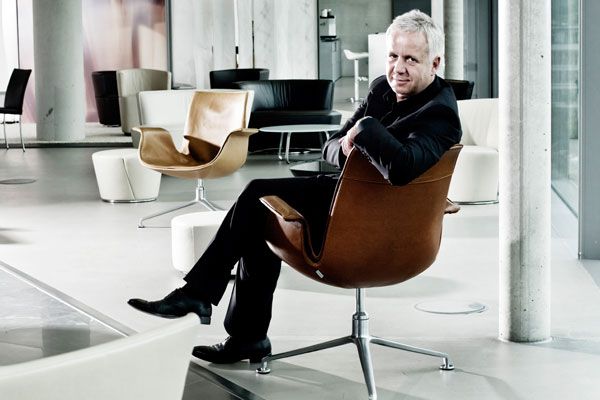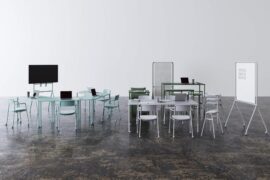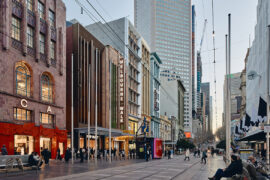Walter Knoll counts as one of the world’s most historical design names. Established in 1865 by Wilkhelm Knoll, it runs into its 150th year of business in 2015 and shows no signs of slowing. Leading the charge is CEO Markus Benz, who has been key in re-energising the company since he joined in 1998. We speak with him about the core values of the company and hear his thoughts on Walter Knoll’s 150 years in design.

May 15th, 2015
Describe the key components of the Walter Knoll business.
We have a very strong residential business with the home collection, which goes from the living room, to the dining area, to the bedroom. It’s a whole concept in loose furniture. When it comes to the contract side, we design furniture for executive offices, conferences areas for management, lobbies, dining areas, things like that.
What is the main difference in approach for the two arms of the business?
The residential collection is about your personal identity because you buy according to your personal values; you personally select something for yourself. In the contract business, it’s about the identity of the brand. For example, we do the Porsche showrooms worldwide. We talk with Porsche and find out what their requests are, how they want to be seen by their clients, and we deliver the right product because it shows the values of the company – how do you treat the customer, what is the customer’s experience, et cetera.
So you’re talking about furniture as a branding tool.
In 1951, David Ogilvy said that the brand is the customer’s idea of a product. It’s a little bit too narrow in my mind. I would say that today the brand is an image. And furniture is always in an image, because it’s in a picture, a part of a setting. Just put an ugly piece of furniture in place of a good one and you’ll see exactly how big the difference is. People think it’s not important, but it’s of greater importance than a lot of people know.
At your last exhibition at Orgatec, the overall theme at Walter Knoll was ‘Communication and Identity’. Explain the idea of communication.
Communication is a big part of the modern management environment. The task of a management executive is to communicate, bring people together, make decisions, inspire people, discuss, involve. The executive needs a tool for that. If management gets the same tool as the staff, it should correspond with the same task. But the task is different. So that was the idea behind the Keypiece Communication Desk by EOOS.
Walter Knoll also provides solutions for the in-between spaces in offices.
Yes, we can talk about lobbies and break-out areas. With Ben van Berkel, we developed the concept of Seating Stones, which is exactly for the mid-zones or activity-based workspaces. So the main office is not our [realm], but we float into the office through several areas.
And you see the market for this increasing?
It’s a worldwide concept. Property is very expensive and people try to make use of the space [as efficiently as possible]. It’s a natural process and when you look at where [property] prices went up in the past years, that’s where it will develop naturally.
Describe Walter Knoll’s approach when it comes to collaborations.
We have made the decision to work with external designers. We work as the development partners and team for the external designers, but through a long-term working relationship. I’ve worked with EOOS for 18 years now, PearsonLloyd for 17 years, Norman Foster for 15 years, and Ben van Berkel 10 to 12 years.
2015 marks Walter Knoll’s 150th anniversary. In your opinion, what is Walter Knoll’s greatest achievement thus far?
It’s the company’s contribution to international furniture history. The founders’ two sons, Walter and Wilhelm II (often known as Willy), made the first modern furniture. A new spirit – a modern age – was emerging very strongly in Germany in the early 1900s. Then there was the Bauhaus era, and it all happened in Germany. The Knolls were at the right place at the right time, and they made and patented construction principles for modern furniture – including the anti-moth system. They had the idea to make metal springs for seats and use textiles and foam instead of traditional seagrass and horse hair, which would breed moths. And this is a part in international history.
INDESIGN is on instagram
Follow @indesignlive
A searchable and comprehensive guide for specifying leading products and their suppliers
Keep up to date with the latest and greatest from our industry BFF's!

A longstanding partnership turns a historic city into a hub for emerging talent

Welcomed to the Australian design scene in 2024, Kokuyo is set to redefine collaboration, bringing its unique blend of colour and function to individuals and corporations, designed to be used Any Way!

For Aidan Mawhinney, the secret ingredient to Living Edge’s success “comes down to people, product and place.” As the brand celebrates a significant 25-year milestone, it’s that commitment to authentic, sustainable design – and the people behind it all – that continues to anchor its legacy.

London-based design duo Raw Edges have joined forces with Established & Sons and Tongue & Groove to introduce Wall to Wall – a hand-stained, “living collection” that transforms parquet flooring into a canvas of colour, pattern, and possibility.

At the 28th Dulux Colour Awards, designers were celebrated for their unwavering efforts to use colour to elevate architecture and design.

The hottest style child to hit the Melbourne street scene is Collingwood. So what happened when MID took over?
The internet never sleeps! Here's the stuff you might have missed

Carr’s largest residential project to date integrates concrete, steel mesh and landscape across 122 apartments in Melbourne’s Brunswick.

Buchan weaves heritage and contemporary retail across a 3,600sqm site featuring dual-branded hotels, arcades and revitalised laneways.